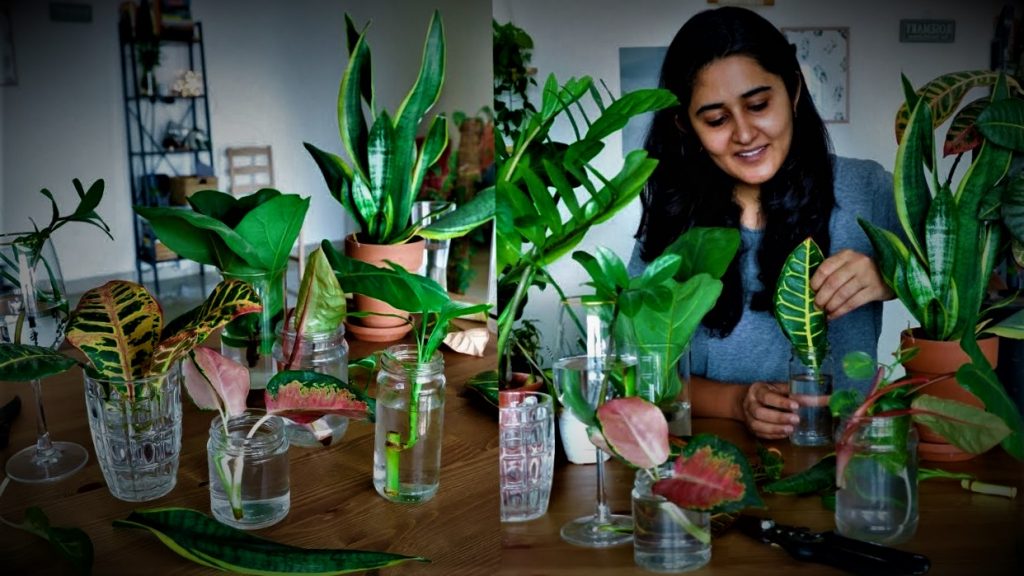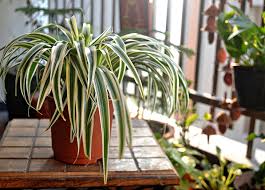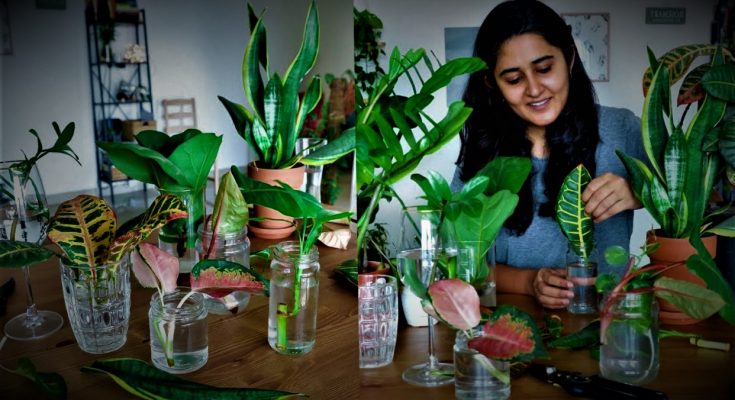Growing indoor plants in water are a bit a cheap and clean method, but many indoor plant lovers do not know how to grow their indoor plants in water, because this is a bit different technique. The majority of indoor plants can easily grow in water permanently and some indoor plants can grow or propagate in water. We will look into it what types of water can grow easily and permanently.
These plants do not need many complicated hydroponic methods to grow plants. This is a reality that you can grow some plants permanently, if, provide them with what exactly they require. First of all, I want to define what types of pots, and jars you need to grow indoor plants in it.
Glass Jars, and glass bottles for growing indoor plants in water
Glass jars and glass bottles are a great choice if these are available at home, everyone has many glass jars and bottles empty and available for this purpose. This can be a cheap and a better choice. Glass jars and bottles come in different styles and you can place them in the room where they can be more suited.

Indoor planting in Ceramic Vases
Botanists recommend Ceramic vases, if you want to grow an indoor plant in water, this is a great option because Vases are good for plant health, and they will give a stylish and unique look to your room. Ceramic vases come in different designs and colors; you have the choice to choose Vases according to the decoration requirement of your room.
Wall Mounted Planters for indoor plants
This is another elegant and space-saving idea to use a wall-mounted platter; it gives a stylish and unique look to your rooms walls and plenty of space can be safe. It can create good gestures by placing wall-mounted planters with a green look on the wall. You can use trailing plants in wall-mounted planters for a better and unique look.
Now there are some very important points we must know before we start growing indoor plants in water.
1: Fertilizing indoor plants in water
All we know is support when we grow indoor plants in the pot because the soil has nutrients in it, but the water situation is different. Water has some minerals but these are not enough to grow independently, moreover, water resources are limited to that jar or pot where plants grow, plants can only get minerals and nutrients that this limited space can offer. We should use regularly liquid fertilizer for indoor planting in water, but keep in mind type of fertilizer and quantity of fertilizer can vary from plant to plant ant and the quality of water. Always remember not to grow plants in tap water because of the chlorine in it. Use mineral water or rainwater.
2: Water Quality for indoor plants in water
Another important point is water quality, as I earlier mentioned do not use water that contains chlorine because it is harmful to a new plant in water sometimes plants die in a few days in presence of chlorine. Better to use mineral water or if possible rainwater, and use charcoal in the pot before planting in water some stones are also a good idea. Charcoal is good to control water quality for a long time and many germs and odor is not produced for a longer time, change charcoal each after one or two months if possible. Water rotation is also very important, rotate water and filled a jar or pot with fresh water each after two weeks regularly.
3: Light Quality for indoor plants in water
Light quality also plays a vital role when it comes to growing indoor plants especially indoor plants in water. But it all depends on the plant to plant, many plants need low light and can survive for long periods with low or very little light, while some plants require good quality light for at least a few hours in a day, make sure you have proper light arrangements and space in a room where you are growing indoor plants.
4: Temperature requirements for indoor plants in water
Temperature is as important for plants growing indoors as plants growing outside, for instance, if you are growing a plant in a room that requires a bit of hot and humid weather but you are using an Air conditioning system regularly it affects your plant health and maybe not grown or even die in such circumstance same as if a plant requires cold temperature and due to winter you are using continuously heating system in room plant will not grow and will die in few days.
Now here is a list of indoor plants that can grow easily
1: Golden pothos

Golden pothos, or Epipremnum aureum, is native to French Polynesia and the Solomon Islands. It’s also one of the best choices as a low-light indoor plant. This plant can live in nature in its natural environment for just five to ten years, but with better care indoors it can last five years. Golden pothos makes an excellent houseplant and is perfect for providing fresh air. It’s called “devil’s ivy” because it can’t be killed – even when kept in the dark it stays green. The plant can grow in water but need to follow the instructions I mentioned at the last of this article.
2: Chinese Evergreen Plant
The Chinese evergreen indoor plant is found in the tropical and subtropical regions of Asia and New Guinea and it can live anywhere from 10-25 years if taken care of properly. This indoor plant easily grows during the summer months, and much slower during the winter months. If your room’s humidity level is low, you can place a bowl of water near or under the plants to help maintain their humidity levels. The plant needs to be watered about once every 10 days in summer and then once every 3 weeks in winter. Fertilizer should also be given about once a month. This plant can also grow in a water bottle or jar, I have provided the instructions on how to grow indoor plants in water at the last of this article.
3: Spider Plant Spider plants are a popular indoor plant due to their ease of care and beautiful, lush leaves. Spider plants are native to West and South Africa but can now be found in Europe with slightly less success in the wild. It’s hard to kill this plant which makes it excellent for beginners who would like to know how to take care of an indoor plant. For the best rates of growth indoors, you’re looking at 15 inches tall. This


